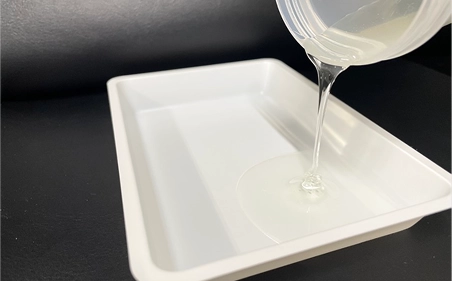Characteristics of urethane rubber (elongation, strength, shock absorption) and comparison with other materials
Characteristics of urethane rubber (elongation, strength, shock absorption) and comparison with other materials
Urethane rubber, also known as polyurethane elastomer, is a polymeric material characterized by the excellent mechanical strength and rubber-like elasticity. Because it has high resistance to abrasion and tearing, as well as high shock absorption and resilience, it is widely used in industrial parts such as rollers and wheels, automotive parts, and even sporting goods. On the other hand, it is important to consider the risk of degradation due to environmental factors such as UV rays and heat, and select the right formulation and additives depending on the application. In addition, compared to other rubber-based materials, it is easy to increase hardness, and also weight reduction and life extension can be expected. In order to take advantage of these characteristics, it is necessary to have appropriate conditions in place that take into consideration resistance to temperature and chemicals. With these considerations, urethane rubber is expected to be used in a wide variety of fields, which is one of the strengths of urethane rubber.
*Please note that the values presented in this ranking are general guidelines only. Actual values may vary significantly depending on the manufacturer, specific grade, and formulation.
Comparison of urethane rubber and other materials ① Elongation rate
Urethane rubber is characterized by its high elongation rate of 300-700%, while also offering excellent mechanical strength and abrasion resistance. General-purpose rubbers like EPDM also show similar elongation of 300-600%, but urethane rubber often excels in tensile strength and shock absorption, making it more suitable for industrial applications. Silicone rubber and TPE also exhibit significant elongation, but urethane rubber is sometimes selected for its superior weather resistance and hardness adjustment, depending on the usage environment and molding method.
Urethane rubber has high elongation and mechanical strength, and is suitable for rollers and seals requiring abrasion resistance. Rubber-Like Resin has an extremely wide elongation range of 300-1,000% and is expected to be used in various applications by taking advantage of high elasticity and shock-absorbing functions. EPDM rubber has elongation close to that of urethane rubber. And it is often used for outdoor applications due to high weather resistance. Silicone rubber is used in the medical and electrical fields due to both temperature resistance and elongation. TPE has the advantages of processability and recyclability.
Comparison of urethane rubber and other materials ② Tensile strength
Urethane rubber has a relatively high tensile strength of 10 to 50 MPa, and also has excellent elasticity and shock-absorbing properties.
General-purpose rubbers such as EPDM and silicone rubbers have tensile strengths of 5-15 MPa. They are often differentiated by their outdoor weather resistance and resistance to a wide range of temperatures. TPE covers a relatively wide strength range of 5 to 30 MPa and has excellent moldability and recyclability. On the other hand, RLR has both high elongation and damping capabilities in the 6 to 30 MPa range so that they are good alternative materials to urethane rubbers for some applications.
General-purpose rubbers such as EPDM and silicone rubbers have tensile strengths of 5-15 MPa. They are often differentiated by their outdoor weather resistance and resistance to a wide range of temperatures. TPE covers a relatively wide strength range of 5 to 30 MPa and has excellent moldability and recyclability. On the other hand, RLR has both high elongation and damping capabilities in the 6 to 30 MPa range so that they are good alternative materials to urethane rubbers for some applications.
Urethane rubber has both high strength and rubber-like elasticity and it is used in a wide range of fields from machine parts to sporting goods. RLR has a tensile strength of 6 to 30 MPa as well as high elongation and vibration damping properties. Therefore, it has been noticed as a functional material. EPDM rubber has a slightly lower tensile strength, but it has excellent weather and heat resistance and it is suitable for outdoor applications. Silicon rubber has stable physical properties in a wide temperature range and is also useful in the medical and electrical fields.
Comparison of urethane rubber and other materials ③ Shock absorption
Urethane rubber has a loss factor of 0.1 to 0.3, which is a moderate level of damping capability, and a repulsive modulus of 25 to 60%, which is a moderate level of elasticity. Therefore, urethane rubber makes it easy to achieve well-balanced shock absorption performance.
In addition, urethane rubber has higher mechanical strength and abrasion resistance than general-purpose rubbers such as EPDM and silicone, so it can maintain stable performance over the long term even in environments where it is repeatedly subjected to impacts. On the other hand, it does not have the extremely high tan δ or low resilience modulus of RLR, however, it is still superior in terms of overall strength.
In addition, urethane rubber has higher mechanical strength and abrasion resistance than general-purpose rubbers such as EPDM and silicone, so it can maintain stable performance over the long term even in environments where it is repeatedly subjected to impacts. On the other hand, it does not have the extremely high tan δ or low resilience modulus of RLR, however, it is still superior in terms of overall strength.
Comparison by loss factor (tanδ)
The loss factor (tan δ) indicates the vibration-damping performance, and the higher the value, the more easily it absorbs vibration energy. RLR has a significantly high value of 0.9, which is advantageous in situations that strong shock absorption or vibration damping is required. Urethane rubber (0.1 to 0.3), EPDM (0.1 to 0.25), silicone (0.05 to 0.2) and TPE (0.15 to 0.35) are all in the moderate range. Therefore, material is selected based on balancing other properties as well as the vibration damping requirements of the application.Comparison by resilience modulus
The resilience modulus (%) is an index that indicates how much a product bounces back when it receives an impact. The lower the value, the better the impact absorption. RLR (4.5%) absorbs a large amount of impact energy. On the other hand, urethane rubber (25-60%), EPDM (30-60%), silicone (30-50%) and TPE (30-70%) have relatively high resilience and they can balance elasticity and shock absorption. Depending on the application, the key of selection is whether to prioritize vibration damping features or elasticity and resilience.【Summary】Comparison of urethane rubber and other materials
Urethane rubber, also known as polyurethane elastomer, is a polymeric material characterized by the excellent mechanical strength and rubber-like elasticity. Because it has high resistance to abrasion and tearing, as well as high shock absorption and resilience, it is widely used in industrial parts such as rollers and wheels, automotive parts, and even sporting goods. For example, EPDM rubber has high outdoor weather resistance. But urethane rubber is superior in tensile strength and shock absorption in many cases, and it is also strong in applications that require abrasion resistance performance. Silicone rubber can maintain the physical properties in a wide temperature range and is used in specific fields such as electrical insulation, but it may not have the same mechanical strength as urethane rubber.
TPE (thermoplastic elastomer) has excellent moldability and recyclability, and can be adjusted in a wide range of hardness and elongation, but in applications involving long-term loading or high loads, the stiffness and durability of urethane rubber would be preferred to TPE.
The new material we have developed, Rubber-Like Resin, has outstanding shock-absorbing performance and elongation, and it is also characterized by the self-healing properties for scratches and the structure that is resistant to hydrolysis. Comparing these materials, it is important to evaluate vibration control and elasticity performance based on loss factor and repulsive modulus, in addition to mechanical properties such as tensile strength and elongation at break. Overall, urethane rubber has well-balanced performance and can be a good choice under various conditions, but it is essential to use different materials depending on the environment of use and the necessary functions.
TPE (thermoplastic elastomer) has excellent moldability and recyclability, and can be adjusted in a wide range of hardness and elongation, but in applications involving long-term loading or high loads, the stiffness and durability of urethane rubber would be preferred to TPE.
The new material we have developed, Rubber-Like Resin, has outstanding shock-absorbing performance and elongation, and it is also characterized by the self-healing properties for scratches and the structure that is resistant to hydrolysis. Comparing these materials, it is important to evaluate vibration control and elasticity performance based on loss factor and repulsive modulus, in addition to mechanical properties such as tensile strength and elongation at break. Overall, urethane rubber has well-balanced performance and can be a good choice under various conditions, but it is essential to use different materials depending on the environment of use and the necessary functions.
RLR (Rubber-Like Resin): A Revolutionary Material Combining High Tensile Strength and Elongation
Traditional resin materials have struggled to balance flexibility and durability. To overcome this challenge, we've developed Rubber-Like Resin (RLR), which combines rubber-like flexibility with exceptional durability.
This innovative material features superior elasticity and scratch resistance, while also providing excellent vibration absorption and chemical resistance. Since it cures at room temperature, no heating furnace is required—contributing to energy efficiency. RLR can be utilized across diverse applications, from electronic component coatings to construction materials and automotive parts.
This innovative material features superior elasticity and scratch resistance, while also providing excellent vibration absorption and chemical resistance. Since it cures at room temperature, no heating furnace is required—contributing to energy efficiency. RLR can be utilized across diverse applications, from electronic component coatings to construction materials and automotive parts.

Key Advantages of Rubber-Like Resin Compared to Urethane Materials





